How Japan and Serbia found common ground across continents
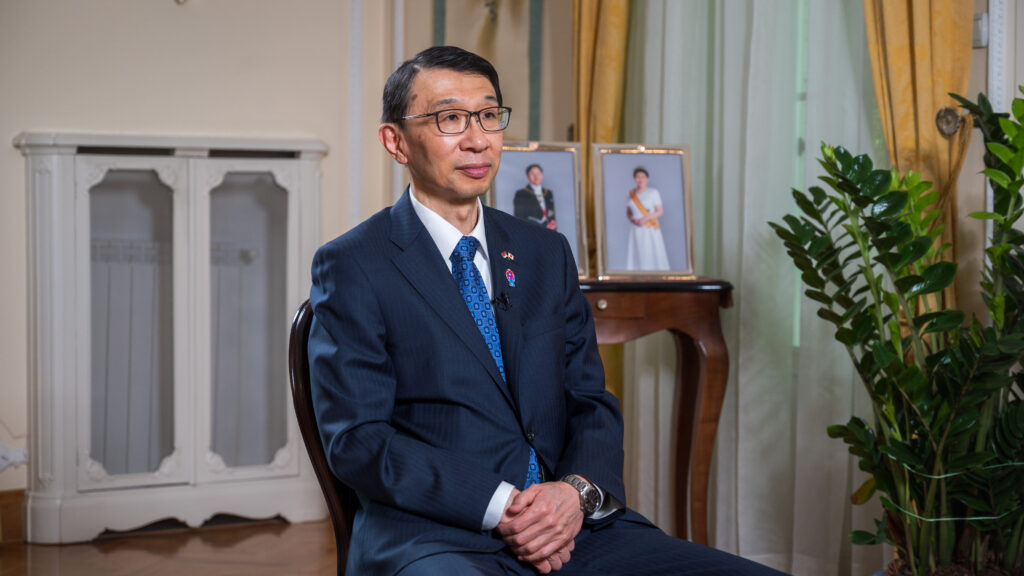 In an exclusive interview for Diplomata, the TV programme produced by Diplomacy & Commerce in cooperation with Euronews Serbia, H.E. Akira Imamura, Ambassador of Japan to Serbia, reflects on the evolving relationship between the two countries, shared values, and the challenges and opportunities that lie ahead.
In an exclusive interview for Diplomata, the TV programme produced by Diplomacy & Commerce in cooperation with Euronews Serbia, H.E. Akira Imamura, Ambassador of Japan to Serbia, reflects on the evolving relationship between the two countries, shared values, and the challenges and opportunities that lie ahead.
We begin this interview with a reference to something that has become a symbol of both Japan and Belgrade – the iconic yellow buses, well-known in our city. Just a few weeks ago, you initiated the retirement of these vehicles, which your government donated to Belgrade back in 2003. This is just one example of Japan’s many donations to Serbia. On the other hand, during the 2011 earthquake and tsunami in Fukushima, Serbia was among the first countries to send humanitarian aid to Japan. How important are these gestures between our two nations?
I believe they are immensely important. Someone in Serbia once shared a proverb with me that says, “A friend in need is a friend indeed.” That is true, as we have supported each other in difficult times.
The event you mentioned – the donation of 93 yellow buses in 2003 – is a good example. Affectionately known as “the Japanese,” these buses became a symbol of our friendship. Back in 2003, Japan was one of the first countries to support Serbia following the devastating wars of the 1990s. Then, in 2011, a powerful earthquake struck Japan, and nearly 20,000 people lost their lives or went missing. Serbia was among the first countries to send humanitarian aid, and we Japanese still remember that generous gesture.
In 2014, when severe floods hit Serbia, Japan responded swiftly by providing relief equipment and supplies. Our two countries have continued to support each other as part of a close and friendly relationship.
The ceremony held a few weeks ago, as you mentioned, marked the retirement of those iconic “Japanese” buses after 20 years of service. Some of the remaining buses were donated to enthusiasts from the Belgrade Public Transport Company who are passionate about preserving vintage buses and vehicles. They will now be used for transporting schoolchildren on excursions. The ceremony was not only a farewell, but also a handover – celebrating a new beginning for these buses.
Three years ago, the Embassy of Japan hosted a reception marking the 140th anniversary of friendly relations between our two countries. Historically speaking, the first official correspondence between Japan and Serbia took place in 1882, when the first Serbian king after liberation from Ottoman rule, Milan Obrenović, wrote to Emperor Meiji, a great reformer, to inform him of his coronation. The Japanese sovereign replied by recognising Serbia as an independent state. How important are relations with relatively small and geographically distant countries, such as Serbia, for Japan?
First of all, thank you for taking part in that ceremony three years ago. Japan has made great efforts to help create a stable and predictable international environment, and the Western Balkans are no exception. Of course, one may ask why Japan is interested in the Western Balkans, a region so far away. My answer is that we are genuinely interested in the stability of Europe, particularly the European Union, our strategic partner, whose strong unity is in our interest.
When European countries invited the Western Balkans to begin the process of EU accession, we saw this as a step towards greater stability not only in the region but across Europe as a whole. That is why we support the countries of the Western Balkans, including Serbia, on their path to EU membership.
Among these countries, Serbia holds the the key to the stability of this region, and we therefore work with your country as a very important partner, in line with the Western Balkans Cooperation Initiative, which former Prime Minister Abe launched during his visit to Belgrade in 2018. So that, in short, is the longer answer to your question.
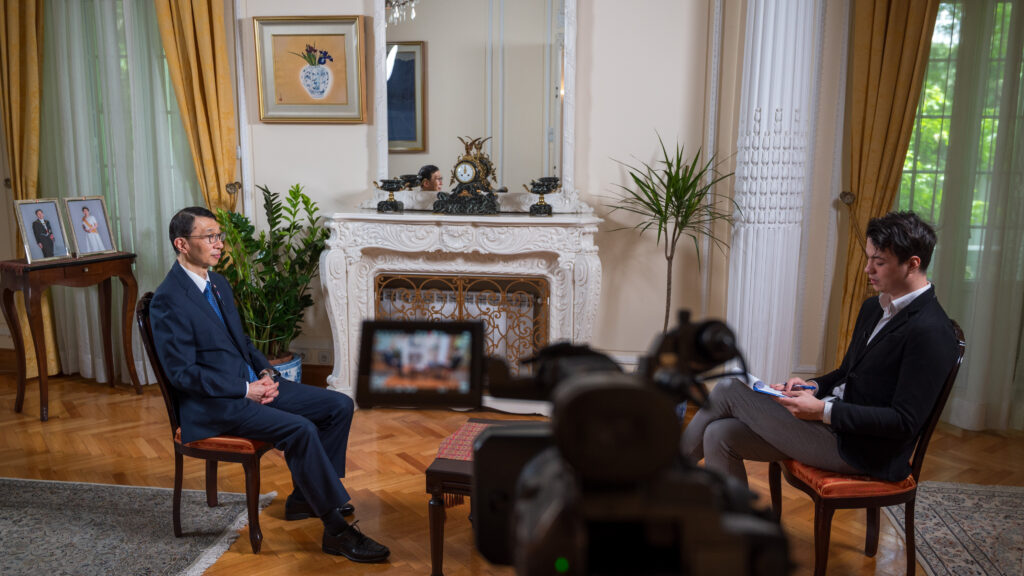 I want to discuss the EXPO. EXPO 2025 officially opened in Osaka on 13 April. A Specialised EXPO is scheduled to take place in Serbia in two years. What does this event mean for your country – and you personally? How many countries are expected to take part?
I want to discuss the EXPO. EXPO 2025 officially opened in Osaka on 13 April. A Specialised EXPO is scheduled to take place in Serbia in two years. What does this event mean for your country – and you personally? How many countries are expected to take part?
The EXPO has just begun and will run for six months under the name EXPO 2025 Osaka, Kansai, Japan. It will serve as a platform for over 160 countries, regions, and international organisations to jointly create the future to address the global challenges we all face. This is also highly relevant for Serbia, because as you mentioned, it immediately precedes EXPO 2027 in Belgrade.
We truly value Serbia’s participation with its pavilion, which is a wonderful contribution to our shared theme: designing future societies for our lives. It is also an important opportunity for Serbia, as it will be sending several economic and political delegations to visit the EXPO site and promote our bilateral ties.
This is a great occasion, and I would like to take this opportunity to invite people from Serbia to come to Osaka and experience the future we are building together.
We supported each other in difficult times – that is the true meaning of friendship
You served in Russia, followed by postings in Canada, Australia, the United Kingdom, Georgia, and now Serbia. In many of these countries, you were present during significant political moments. It has been 20 years since you last visited our country. How does Serbia look to you after two decades?
This is my first time in Serbia in 20 years, and I’m truly impressed by how much progress the country has made. There is a great deal of development, and people seem to be enjoying life. I am enjoying both living and working in Serbia – people are very warm and open towards foreigners, so we feel comfortable here.
You mentioned the changes over the past two decades. One key factor tied to economic progress is the macroeconomic stability achieved in recent years. A growing number of foreign investors, including those from Japan, are entering the market, which is helping to boost economic development and growth. Last year, Serbia was among the European countries with the highest economic growth, making a significant contribution to the region’s economy. That is an impressive achievement.
Back in 2005, when I was here 20 years ago, the shadow of the 1990s wars was still very much present. Today, peace is firmly established in the region, and leaders from the Western Balkans regularly meet – a development we welcome very much . Unfortunately, normalisation between Belgrade and Pristina has not yet been achieved. We support the dialogue between the two sides and hope they will begin implementing the agreements reached so far. We will be looking for constructive efforts in that direction.
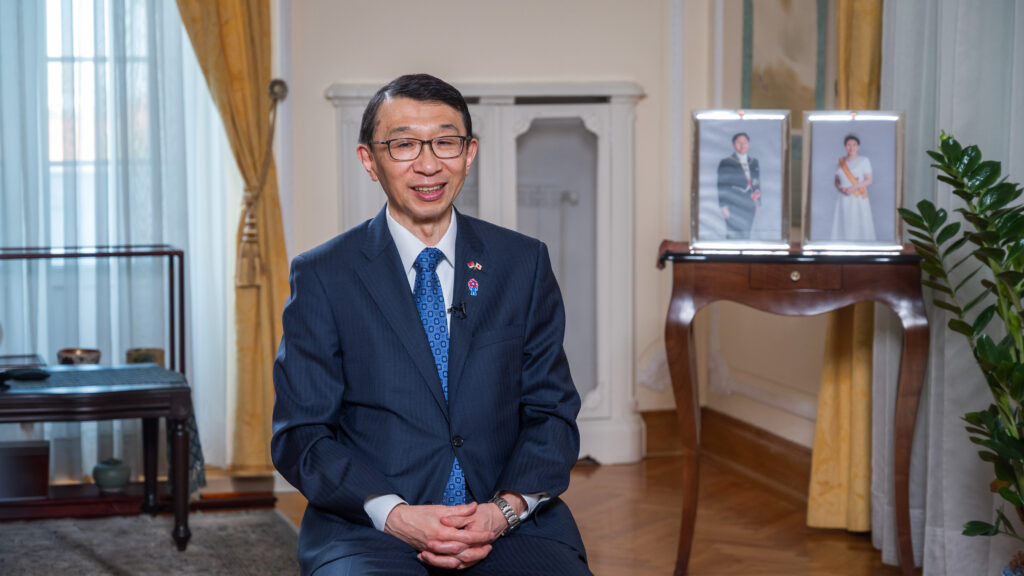 What do you like most about Belgrade and Serbia? What have you had the chance to visit, and which places are your favourites? In your opinion, what are Serbs especially good at – and what do you think we could learn from the Japanese?
What do you like most about Belgrade and Serbia? What have you had the chance to visit, and which places are your favourites? In your opinion, what are Serbs especially good at – and what do you think we could learn from the Japanese?
As I’ve already mentioned, the people of Serbia are exceptionally warm – and that’s what I like most. They are kind, hardworking, and eager to learn new things. One of my favourite places in Serbia is the traditional taverns – the kafane – in Belgrade. I enjoy their bohemian atmosphere, and I’m particularly fond of the music. Old folk songs from the 1960s and 1970s, as well as Balkan melodies, stir a sense of nostalgia in me. These are the things I truly enjoy.
When it comes to what Serbia excels in, particularly in terms of the economy, one of its greatest successes is the IT sector. I recently attended an event where several start-ups presented their ideas to Japanese investors, and I was genuinely impressed by the level of innovation. This represents a strong potential for further cooperation with Japan.
You also asked what Serbia could learn from Japan. If I had to point to one thing, it would be circular economy practices. There’s a Japanese expression, mottainai, which roughly means “it’s too valuable to waste”. Recycling is deeply rooted in our culture and traditions. Of course, like all countries, we are facing climate change and environmental challenges, and there is a growing need for international cooperation. Japan and Serbia are already collaborating on a energy from waste project in Vinča, and Japanese companies are prepared to share even more of their technology and expertise with your country.
What is happening in Ukraine today could happen in East Asia tomorrow
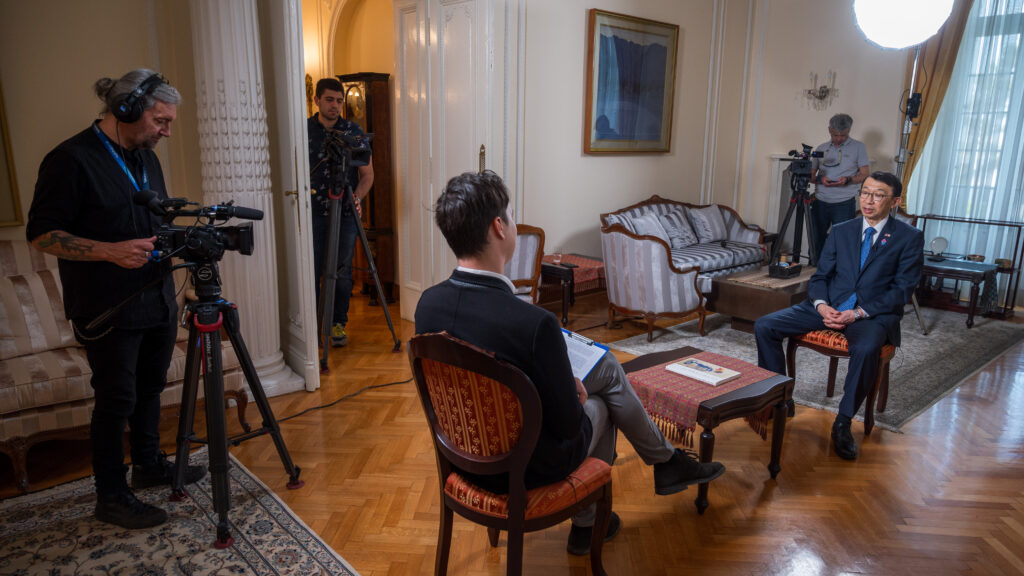 It’s great that you mention Japanese companies. How many Japanese companies are currently operating in Serbia? How many people does the company employ, and are there plans for new companies to open in Serbia in the future?
It’s great that you mention Japanese companies. How many Japanese companies are currently operating in Serbia? How many people does the company employ, and are there plans for new companies to open in Serbia in the future?
Currently, 35 Japanese companies are operating in Serbia. That may not seem like a large number, but in recent years, we have seen some major investments. For the first time in history, in 2023, Japan became one of the top ten foreign investors in Serbia.
The most recent investment project, inaugurated recently, comes from the company JFE Shoji. They have started producing parts for automotive motors. Interestingly, those parts will be supplied to another Japanese company in Novi Sad – Nidec. This marks the first time that Japanese companies have established a supply chain within Serbia. It sends a strong and positive signal to other potential Japanese investors considering Serbia.
This could be a game change – the next step in our cooperation – and I hope it will also contribute to the supply chain for electric vehicle production, which the Serbian government has announced as part of its plans. These two companies are already manufacturing parts for electric vehicles in Serbia and exporting them to the European Union (EU) market. But if there is an opportunity to become part of the supply chain for electric vehicle production within Serbia itself, they are ready – and I sincerely hope that will happen.
You share your name with the renowned Japanese director Akira Kurosawa, whose films – starting with Rashomon in 1950 – have long been admired by audiences in Serbia. Serbian audiences also follow contemporary Japanese artists and writers, such as Haruki Murakami. How familiar is the Japanese public with the work of Serbian artists and creators?
You mentioned Haruki Murakami – when it comes to literature, Ivo Andrić has been translated into Japanese, and most of his major works are available in our language. In other fields, director Emir Kusturica is very well known and popular in Japan, and most of his films are available with Japanese subtitles.
You may have heard of the Japanese–Serbian Film Festival, which is held in both Tokyo and Belgrade. It’s a great opportunity for Japanese audiences to discover newer Serbian films.
As for music, Serbian musicians regularly perform in Japan. This year, Serbian violinist Nemanja Radulović performed in Japan together with the prestigious Yomiuri Symphony Orchestra in Tokyo – that was in January. In February, a young Serbian pianist also gave a concert in Japan, performing classical music by Serbian composers, some of whom are still relatively unknown to Japanese audiences. The performance took place at the Serbian Embassy in Tokyo.
These are wonderful examples, but this year, thanks to EXPO in Osaka, even more events are planned over the next six months, featuring both Japanese and Serbian artists. This year will be another important opportunity for Japanese audiences to discover Serbian culture.
 Two years ago, our company broke the Guinness World Record for the largest gathering of people with the same first and last name – bringing together 256 individuals named Milica Jovanović. Previously, the record was held by a group from Japan, comprising 178 people named Hirokazu Tanaka. A Zoom meeting was later organised between all the Milica Jovanovićs and Hirokazu Tanakas, leading to some new friendships – and perhaps even something more. On that note, how many Serbian nationals are currently residing in Japan, either working there or having found a life partner in the Country?
Two years ago, our company broke the Guinness World Record for the largest gathering of people with the same first and last name – bringing together 256 individuals named Milica Jovanović. Previously, the record was held by a group from Japan, comprising 178 people named Hirokazu Tanaka. A Zoom meeting was later organised between all the Milica Jovanovićs and Hirokazu Tanakas, leading to some new friendships – and perhaps even something more. On that note, how many Serbian nationals are currently residing in Japan, either working there or having found a life partner in the Country?
I’ve heard that there are approximately 260 Serbian nationals currently residing in Japan. I’m not sure how many of them are named Milica Jovanović, but they are either working in Japan or married to Japanese citizens. This number doesn’t include those on short-term visits – we currently have around 4,200 Serbian tourists visiting Japan annually.
However, even when all are counted, the total number of Serbian nationals travelling to Japan remains relatively low compared to those travelling to European destinations. One reason is that there are still no direct flights. I want to help increase the number of Serbian visitors to Japan.
Serbs – particularly younger generations – are genuinely interested in Japanese culture, and we would like to encourage more of them to come to Japan to study. We accept applications from Serbian students who wish to study in Japan through our government scholarship programme, and we welcome new applicants each year. Of course, those who speak Japanese have an advantage, but today, more and more universities are offering courses in English as well.
Recycling is part of our culture – we call it mottainai, the idea that nothing should go to waste
After the Second World War, Japan has generally aligned with the United States and the EU on most global issues. What is your view today on the differences in opinion between the new Trump administration and the European Union regarding the war in Ukraine?
It is important for those diplomatic efforts to achive a more comprehensive ceasefire in Ukraine and a just, lasting peace. Japan has made significant efforts to support Ukraine, at the same time imposing strong sanctions against Russia in coordination with other G7 countries, including the United States, Canada, and European nations.
In March of this year, a meeting of G7 foreign ministers was held, during which these diplomatic efforts toward a ceasefire were welcomed. When we examine the Indo-Pacific region, where Japan is situated, it is becoming increasingly clear that security in this region is closely tied to the security situation in the Euro-Atlantic region.
Attempts to unilaterally and change the status quo by force are entirely unacceptable, whether in Europe or Asia. That is a position shared by many countries, including Serbia. We often say that what is happening in Ukraine today could happen in East Asia tomorrow.
We are deeply concerned about the situation in Ukraine, and that is why we are putting a lot of efforts and providing aid to the Ukrainian people.
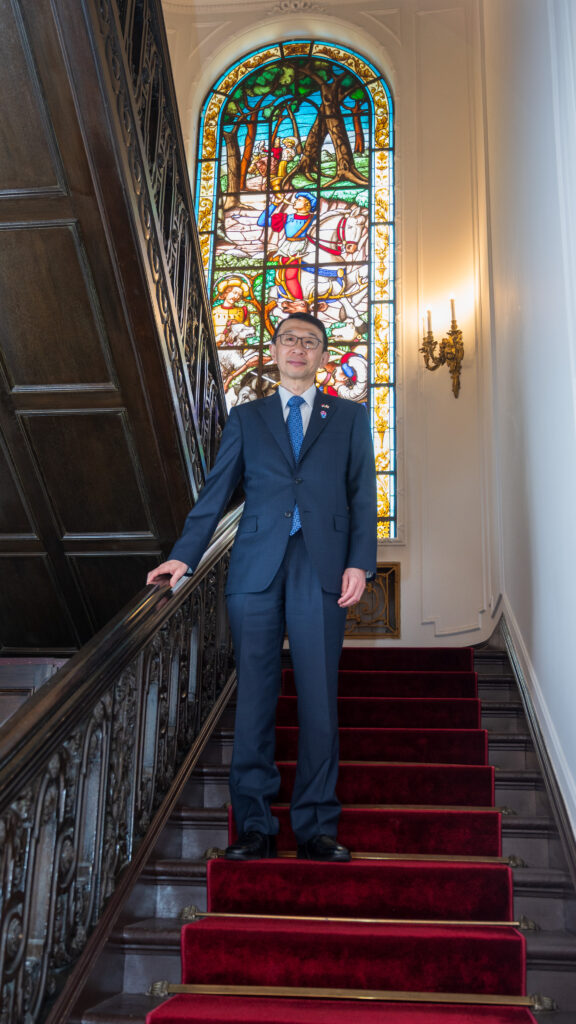
Although two atomic bombs were dropped on Japan, there doesn’t seem to be deep-seated animosity towards the United States today. In Serbia, on the other hand, some of that resentment still lingers after 1999. In your view, what makes the difference? What needs to happen for countries to begin cooperating and respecting one another again after major wars and periods of mutual hostility? What would you say is Japan’s approach to such situations?
We need to go back to the 1930s, when Japan found itself in a deadlock. Unfortunately, to break out of that situation, Japan chose to use force and go to war – a path that proved to be the wrong one. Based on this recognition, Japan made a conscious decision after the war to become a peaceful nation, so that such a tragedy would never be repeated.
We have clearly expressed our deep remorse for the suffering Japan caused in the region, especially in Asia, and have issued repeteatedly apologies to the countries affected by Japanese wartime atrocities. I believe it is also important for countries that fought against us to show tolerance. In those countries, some individuals made sincere efforts to seek reconciliation with Japan, just as there were such individuals on our side. With many of those countries, including the United States, we were able to achieve reconciliation.
Of course, it was also essential to show the world the devastating and inhumane nature of the damage of the atomic bombings on the people of Hiroshima and Nagasaki in August 1945. Instead of harbouring hatred, we have chosen to advocate for peaceful world without nuclear weapons, so that such weapons are never used again. To achieve this, we have pursued a realistic and consistent approach towards nuclear disarmament.
When it comes to the Western Balkans, I believe it may be useful to look at our approach which is to try to learn lessons from history and gain wisdom for the future. It is also essential that everyone shows tolerance towards different people and cultures and makes an effort to achieve reconciliation after conflict. In my view, that is an approach that could be applied in this region.
Instead of hatred, we chose peace and built a future without nuclear weapons